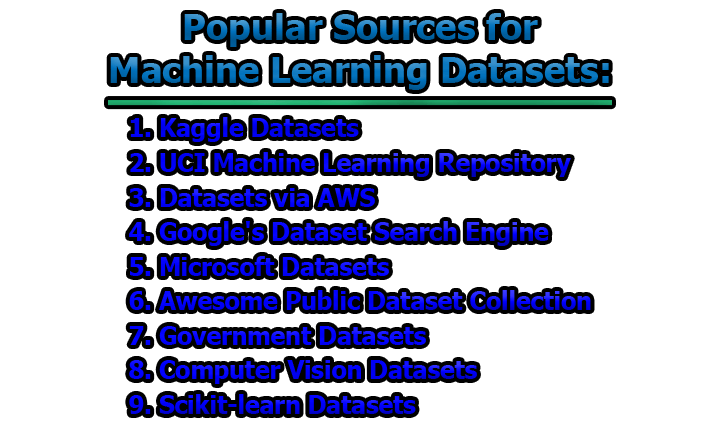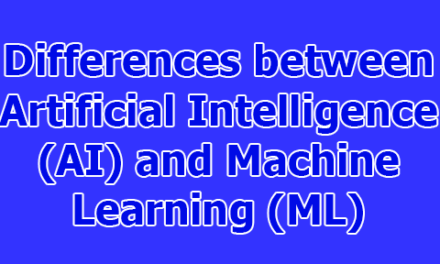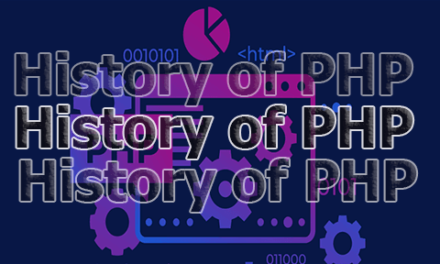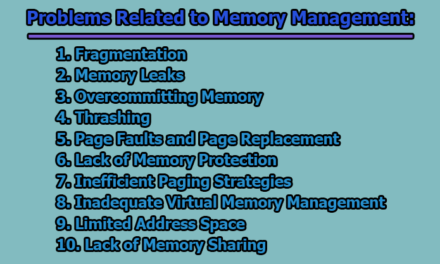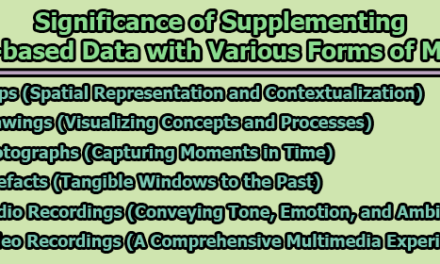In today’s rapidly evolving technological landscape, machine learning has emerged as a transformative force, powering innovations across industries. From healthcare diagnostics to self-driving cars, recommendation systems to language translation, machine learning is driving the next wave of advancements. At the heart of successful machine learning projects lies the availability of high-quality datasets. These datasets provide the raw materials for training and fine-tuning machine learning models. Fortunately, the digital age has ushered in a wealth of resources that offer a wide array of datasets, catering to the diverse needs of researchers, data enthusiasts, and developers. In this article, we will explore types of data in datasets, need of datasets in machine learning, and some of the most popular sources for machine learning datasets.
What is a Dataset?
From a Technical Perspective: A dataset is a structured collection of data points or observations that are organized in a meaningful way. It’s like a digital container that holds information, often in the form of tables, images, text, or other data formats. Datasets provide the essential building blocks for training and testing machine learning models, allowing algorithms to learn patterns, make predictions, and gain insights from the provided information.
From a Researcher’s Perspective: In the realm of research, a dataset serves as a treasure trove of information that researchers delve into to uncover hidden truths and make meaningful discoveries. It’s akin to a puzzle, where each data point contributes a piece to the larger picture. Researchers meticulously study and analyze datasets to answer questions, validate hypotheses, and contribute new knowledge to their field of study.
From a Real-World Analogy: Imagine a dataset as a giant library, where each book represents a piece of information. Just as a library contains books on various topics, a dataset contains data points about different aspects. These could be details about people, places, events, or anything else you want to study. Researchers, like librarians, navigate through these data points to extract valuable insights, much like readers explore books to gain knowledge.
From a Machine’s Perspective: For a machine, a dataset is like a series of examples or experiences that it can learn from. Picture it as a set of training exercises for a robot. Each exercise, or data point, shows the robot how to perform a task or make a decision. By going through these exercises, the robot—equipped with algorithms—learns to generalize and adapt its behavior, becoming more capable in handling new situations.
From a Business Angle: In the business world, a dataset is akin to a treasure map. It holds the valuable information that companies need to understand their customers, make informed decisions, and identify trends. Like a map guiding explorers, a dataset guides businesses toward insights that can shape strategies, drive innovation, and ultimately lead to success in a competitive market.
From a Storytelling Perspective: Think of a dataset as the raw material of a story. Each data point is like a character, and the entire dataset forms the plot. Just as a storyteller weaves characters and events to create a narrative, analysts and data scientists craft compelling stories by extracting meaning and patterns from datasets, turning numbers into impactful insights.
From an Everyday Life Viewpoint: Datasets are everywhere in our modern lives. Imagine your favorite recipe book; each recipe contains a set of ingredients and instructions. Now imagine you’re experimenting with new ingredients and methods—this is akin to working with a dataset. In our digitally connected world, datasets are like the ingredients that power the apps, services, and technologies we use daily, helping them respond, adapt, and improve based on data-driven insights.
Understanding the Different Types of Data in Datasets:
Datasets form the cornerstone of modern data-driven applications, providing the raw material for machine learning, analysis, and decision-making. Within these datasets, various types of data are stored, each offering unique insights and posing distinct challenges. Let’s dive into the world of dataset data types, exploring numerical, categorical, and ordinal data, and shedding light on the use of dummy datasets for practicing machine learning.
a) Numerical Data: Numerical data consists of quantitative values that can be measured and expressed in numbers. This type of data is often associated with measurable attributes such as height, weight, age, temperature, and house prices. Numerical data can be further categorized into two subtypes:
- Continuous Numerical Data: This type of data can take any value within a specific range and can be infinitely divided. For instance, temperature readings, which can be 23.5°C, 23.52°C, and so on.
- Discrete Numerical Data: Discrete numerical data, on the other hand, can only take specific distinct values within a range. The number of children in a family or the count of products sold are examples of discrete numerical data.
b) Categorical Data: Categorical data represents distinct categories or labels that do not have any inherent order or numeric value associated with them. This type of data is commonly used to represent attributes like colors, genders, yes/no responses, or types of fruits. Categorical data can be binary (two categories) or multinomial (more than two categories). These values are often represented using text labels.
c) Ordinal Data: Ordinal data shares similarities with categorical data but holds an additional layer of information—it can be ranked or ordered based on a meaningful hierarchy. Ordinal data reflects a certain degree of preference or importance among categories. A prime example is customer satisfaction ratings, where “Very Satisfied,” “Satisfied,” “Neutral,” “Dissatisfied,” and “Very Dissatisfied” represent an ordered scale.
The Role of Dummy Datasets: Real-world datasets are often substantial in size, containing a multitude of records and variables. Handling such large datasets can be challenging, especially when practicing machine learning algorithms. As a solution, dummy datasets come into play. A dummy dataset is a simplified version of a real-world dataset, containing a manageable number of records and variables. These datasets are specifically created to facilitate learning, experimentation, and algorithm testing.
By using dummy datasets, individuals new to machine learning can grasp the fundamentals without getting overwhelmed by complex data. These datasets serve as sandboxes for implementing algorithms, testing hypotheses, and refining coding skills. Once proficiency is gained, transitioning to real-world datasets becomes more manageable.
Need of Datasets in Machine Learning:
The Fundamental Need for Datasets: Machine learning thrives on patterns, correlations, and insights derived from data. Without data, machine learning algorithms have nothing to learn from and no context to make informed decisions. Datasets serve as the fuel that drives the learning process. These datasets contain real-world observations, measurements, and records that algorithms utilize to understand relationships, recognize patterns, and make predictions.
Dataset Collection and Preparation: Collecting and preparing datasets is a pivotal phase in the journey of creating an ML/AI project. Raw data, while valuable, is often messy, incomplete, and inconsistent. Dataset preparation involves data cleaning, transformation, and feature extraction, ensuring that the data is in a usable format for training and testing. The quality and suitability of the dataset directly impact the performance of machine learning models.
The Technology and Datasets Symbiosis: Behind the scenes of any machine learning project, there exists a symbiotic relationship between the technology employed and the datasets utilized. The algorithms and models developed rely heavily on the datasets for guidance, training, and validation. However advanced an algorithm may be, it’s only as effective as the data it’s exposed to. Properly prepared and curated datasets enable algorithms to learn meaningful patterns, generalize from examples, and make accurate predictions in real-world scenarios.
The Two Sides of Datasets: Training and Test: In the journey of building machine learning applications, datasets are typically divided into two distinct parts: training datasets and test datasets.
- Training Dataset: This dataset serves as the foundation for teaching machine learning models how to behave. It contains a large portion of the data and the corresponding target outcomes. During the training process, algorithms learn from this dataset by adjusting their internal parameters to fit the observed patterns and relationships.
- Test Dataset: After the model has been trained, it needs to be evaluated for its performance on new, unseen data. The test dataset provides this evaluation ground. It contains data that the model has never encountered before, and its performance on this data helps gauge its ability to generalize and make accurate predictions beyond the training set.
Challenges and Considerations: While datasets are indispensable, they often come with challenges. They can be massive in size, making downloading them a time-consuming process, especially without a fast internet connection. Additionally, datasets might contain biases, missing values, or outliers, which necessitate careful handling during preparation.
Popular Sources for Machine Learning Datasets:
Here is a list of datasets that anyone can access for free and use in their projects:
1. Kaggle Datasets: Kaggle, a renowned platform synonymous with machine learning competitions, has also developed into a vibrant hub for dataset discovery and sharing. Its repository of datasets spans a wide spectrum, including structured data, images, text, and more. The unique aspect of Kaggle is its thriving community, where data professionals, researchers, and enthusiasts come together to contribute datasets, collaborate on projects, and participate in data science competitions. This collaborative environment fosters knowledge sharing and skill enhancement, making Kaggle not only a dataset source but also an educational platform.
Kaggle’s datasets range from beginner-friendly to advanced, catering to users of all skill levels. The diversity of data types and topics ensures that there is something for everyone. Whether you’re interested in predicting housing prices, analyzing sentiment in text, or tackling complex computer vision tasks, Kaggle’s datasets have you covered.
2. UCI Machine Learning Repository: The University of California, Irvine’s Machine Learning Repository (UCI ML Repository) is a pioneer in providing datasets for the machine learning community. Established in 1987, the repository has a long-standing reputation for hosting curated datasets that have become benchmarks for various machine learning tasks. The datasets cover a plethora of domains, including classification, regression, clustering, and recommendation systems.
What sets UCI ML Repository apart is its commitment to maintaining high-quality datasets with clear documentation. These well-structured datasets often come with descriptions of their origin, attributes, and potential use cases. This meticulous curation and documentation make the repository an invaluable resource for researchers looking to benchmark their models against established standards.
3. Datasets via AWS: Amazon Web Services (AWS), a global leader in cloud computing, provides a wealth of datasets that cater to diverse machine learning applications. From satellite imagery and genomic data to economic indicators and beyond, AWS offers datasets that are often used for real-world applications and research. What distinguishes AWS datasets is their scale and complexity, making them suitable for projects that require substantial computational resources.
Furthermore, AWS offers both open datasets and subscription-based datasets, ensuring accessibility for various budget considerations. The cloud infrastructure provided by AWS enhances the ease of use by allowing users to directly access and analyze the datasets in their preferred computing environment.
4. Google’s Dataset Search Engine: Google, a technology giant, has contributed to the dataset discovery landscape with its specialized search engine, Google’s Dataset Search. This tool indexes datasets from various sources, including academic repositories, government websites, and data publishers. The search engine streamlines the process of finding datasets by allowing users to filter results based on attributes like data type, domain, and format.
What sets Google’s Dataset Search apart is its commitment to indexing datasets directly from their sources, ensuring that users get access to the most up-to-date and relevant information. Researchers looking for datasets on specific topics or domains will find this tool particularly beneficial for discovering datasets that align with their research goals.
5. Microsoft Datasets: Microsoft, a technology powerhouse, offers a range of datasets through its Azure cloud platform. These datasets cover a broad spectrum of machine learning domains, including computer vision, natural language processing, and more. What makes Microsoft’s datasets stand out is their emphasis on accessibility and usability.
Many of Microsoft’s datasets come with comprehensive documentation and tutorials, making them particularly user-friendly for both novice and experienced practitioners. This commitment to providing resources that aid in dataset understanding and utilization sets Microsoft’s datasets apart as valuable assets for building robust machine learning models.
6. Awesome Public Dataset Collection: The Awesome Public Dataset Collection is a community-driven project hosted on GitHub. This collection is a curated list of datasets from various domains and sources, making it a central repository for discovering datasets across the globe. The open-source nature of the collection encourages contributions from the community, ensuring a diverse and continuously updated selection of datasets.
This collection is particularly beneficial for those who are looking for datasets beyond the mainstream sources. It serves as a gateway to discovering datasets from specialized domains and underrepresented sources, enriching the dataset landscape and enabling more unique and innovative projects.
7. Government Datasets: Governments around the world have recognized the value of open data initiatives. Many government agencies provide datasets related to public health, transportation, economics, and more. These datasets, often available through government websites or dedicated data portals, can be immensely valuable for projects with a societal impact or a focus on policy-related issues.
Government datasets are especially advantageous for research that requires accurate and up-to-date information. As these datasets are often sourced from official government agencies, they can serve as authoritative resources for researchers aiming to make data-driven insights and recommendations.
8. Computer Vision Datasets: Computer vision, a subset of machine learning, focuses on enabling machines to interpret visual information from the world. To train and evaluate computer vision algorithms, specialized datasets are essential. Several prominent datasets, such as ImageNet, COCO (Common Objects in Context), and Open Images, offer vast collections of labeled images that cover a wide range of object categories and contexts.
These datasets have played a crucial role in advancing the capabilities of image recognition systems. From detecting objects in natural scenes to segmenting complex images, computer vision datasets provide the foundation for developing accurate and robust computer vision models.
9. Scikit-learn Datasets: Scikit-learn, a widely used machine learning library in Python, includes a collection of toy datasets that are bundled with the library. While these datasets may not be suitable for complex real-world projects, they are highly valuable for educational purposes, experimentation, and quick prototyping. The scikit-learn datasets cover a variety of machine learning tasks, such as classification, regression, and clustering.
These toy datasets serve as excellent starting points for beginners who want to grasp fundamental machine learning concepts and practice implementing algorithms. They provide a hands-on learning experience that helps build intuition about data manipulation, feature engineering, and model evaluation.
In conclusion, comprehending the diverse data types within datasets and recognizing their pivotal role in machine learning underscores the importance of well-structured and varied data. The significance of datasets in model training, validation, and advancement cannot be overstated, as they facilitate algorithm learning and innovation across domains. Frequent sources, including government agencies, academic institutions, and online repositories, offer datasets like ImageNet and MNIST, powering AI development. Accessing datasets involves downloading from repositories, data scraping, collaborations, and synthetic generation, all contributing to the dynamic landscape of machine learning’s growth and ethical application.

Assistant Teacher at Zinzira Pir Mohammad Pilot School and College


